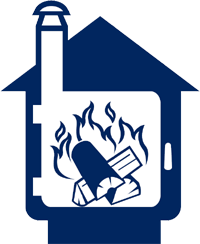Burn It Smart Campaign Begins!
Burn it Smart... in the RDN
Burning Information
[1 of 4 in the series]
With the cooler weather approaching, nothing is cozier than warming the toes in front of a friendly wood fire. But are you doing it right?
If there is a lot of wood smoke coming from your chimney, or if you can smell it long after your fire has been burning, the "Burn It Smart" campaign can help. There are tips for all on how to have cleaner, safer and more efficient fires that reduce wood smoke.
When wood is burned at a high temperature, virtually nothing but carbon dioxide and water vapor are produced. When you allow your fire to smolder, blue/grey smoke is produced, which means creosote is forming at the same time. Creosote is deposited on the inside of your chimney when the wood is not burned completely and becomes a highly volatile fuel during a chimney fire. Next
